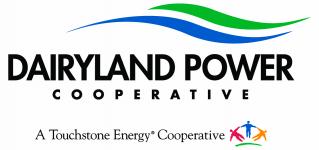The major maintenance project completed earlier this summer at Dairyland's John P. Madgett (JPM) power plant supported grid reliability... and the environment. The precipitator equipment improvement conducted during the outage more than doubled the amount of fly ash Dairyland is able to collect during the coal combustion process.
Local benefit: Dairyland markets the fly ash for beneficial reuse, where it is recycled as a highly valued additive to cement and concrete applications.
A visible example of this is now right down the road from Dairyland's La Crosse Campus - JPM’s ash is used in the concrete roundabouts currently under construction on South Avenue and Mormon Coulee Road! (Photo taken at Ward Ave./South Ave. intersection in La Crosse.)
"Our ability to recycle literally tons more ash as a direct result of the JPM maintenance project means that we can sell more to the regional concrete market, providing environmental and economic benefits," explains Manager, Water & Waste Programs Leif Tolokken.
Those tons add up to trackable environmental benefits. One ton of recycled ash into concrete equals about an equal reduction in carbon dioxide eliminated from the concrete process. "The concrete poured by River City Ready Mix for the southside La Crosse roundabout project contains upwards of 20 percent JPM fly ash," said Tolokken.
Dairyland has a strong history of recycling the majority of its coal combustion byproducts annually and this is not the first time our ash has been beneficially reused here at home. Asphalt laid earlier this summer near Tomah contained byproducts recycled from JPM and more will be used on a second section near Tomah this fall. Hwy. 35 and Hwy. K near Genoa, and Hwy. 35 to Alma contain Dairyland's bottom ash, utilized as a gravel overlay material, which “sparkles” more than standard overlay. The bottom ash material provides better traction, is very durable and doesn’t break windshields as readily as standard gravel. It also melts ice faster … a real bonus for winter driving.
Sustainability: Ash recycling is a win-win for environment, economy
For each ton of coal Dairyland burns to produce electricity, approximately 5% results in an ash byproduct. Of this ash byproduct, 80% is referred to as fly ash, a light powdery substance and 20% is bottom ash, a coarse granular material.
Most concrete today in the Driftless Region is 30% fly ash, contributing to stronger, less permeable concrete, at a lower price. Fly ash is less than half the price of Portland cement. Consumers save money when building roads, bridges, buildings and other community projects with concrete that contains fly ash. By using a recycled product, less virgin clay and limestone are extracted from quarries.
